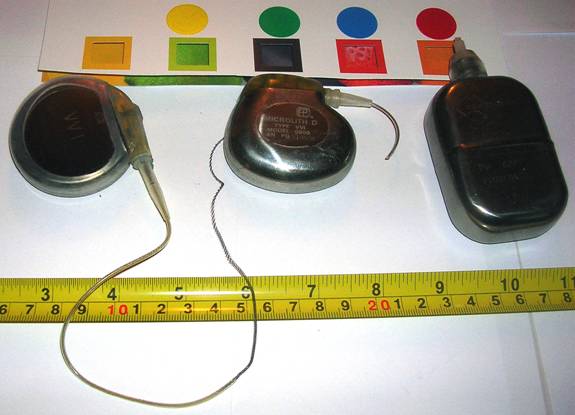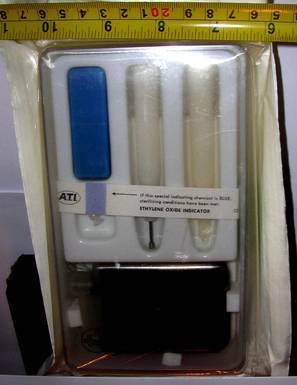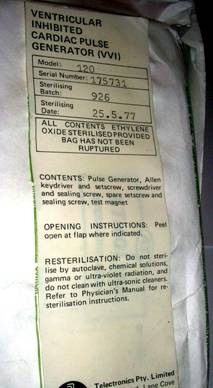
South Australian Medical Heritage Society Inc
Website for the Virtual Museum
Home
Coming meetings
Past meetings
About the Society
Main Galleries
Medicine
Surgery
Anaesthesia
X-rays
Hospitals,other organisations
Individuals of note
Small Galleries
Ethnic medicine
- Aboriginal
- Chinese
- Mediterran
Cardiac Pacemakers
The three pacemakers and the sterilised kit have been kindly provided on temporary loan by Dr. Chris Zeitz from the Department of Cardiology, The Queen Elizabeth Hospital
Cardiac pacemakers 1990, and 1977
The first external pacemaker was built in 1950 by a Canadian electrical engineer John Hopps. These early pacemakers were large, uncomfortable and worn externally. They were plugged into a wall outlet and affected by mains power failures.
The first subcutaneous implantation was made in 1958, by a Swedish team. By 1960 despite early battery problems such pacemakers lasted only a few years. Current pacemakers with nickel cadmium instead of mercury cells last up to 10 years or more.
They are relatively small with a titanium shell, and are implanted subcutaneously in the upper chest wall. The wire (the lead) is passed into a heart chamber via a major vein.
The end of the lead is attached to the heart muscle by a screw like device or a small fish-hook. Whilst the early devices paced continuously, the contemporary pacemakers pace on demand. The leads can be placed in appropriate heart chamber. They can also defibrillate.
PACEMAKER KIT READY FOR USE
A prepacked, ethylene oxide sterilized pacemaker is shown, manufactured by Telectronics Pty. Ltd. in New South Wales in 1977.
It contains the pulse generator which is ventricular inhibited, leads, Allen key driver, and set screw, spares and a test magnet.
Pacemaker kit in original
pack, front and back view
-o0o-


